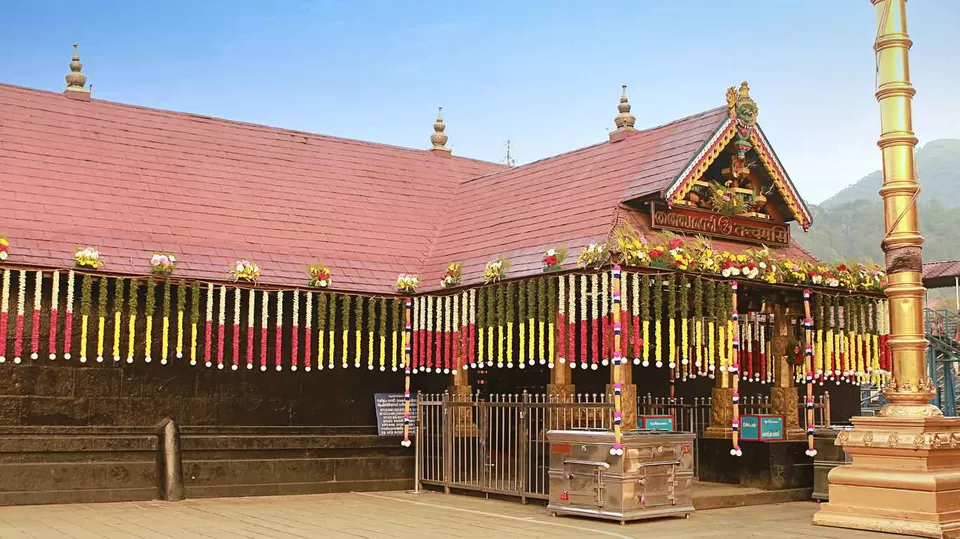Sabarimala Sri Dharma Sastha Temple‚ nestled in the Periyar Tiger Reserve of Kerala‚ India‚ stands as one of the most revered Hindu pilgrimage sites. Dedicated to Lord Ayyappa‚ a deity believed to be the offspring of Lord Shiva and Mohini (the female incarnation of Lord Vishnu)‚ the temple attracts millions of devotees annually. The arduous pilgrimage‚ steeped in tradition and spiritual significance‚ tests the devotees’ physical and mental endurance. This journey is more than just a trek; it’s a profound spiritual experience.
The Significance of the Pilgrimage
The Sabarimala pilgrimage is unique for several reasons. Firstly‚ it’s open to all men‚ regardless of caste or creed‚ provided they adhere to a strict 41-day penance (vratham). This period involves abstaining from worldly pleasures‚ following a vegetarian diet‚ and dedicating oneself to prayer and contemplation. Secondly‚ the temple is only open to women who have not reached puberty or have passed menopause‚ a tradition aimed at respecting the celibate nature of Lord Ayyappa.
The 41-Day Vratham
The 41-day vratham is a crucial aspect of the Sabarimala pilgrimage. During this period‚ devotees:
- Wear black or saffron-colored clothing.
- Abstain from alcohol‚ tobacco‚ and non-vegetarian food.
- Sleep on the floor.
- Address each other as “Ayyappan” or “Swami.”
- Pray twice daily.
The Journey to Sabarimala
The pilgrimage typically begins with the devotee carrying an “Irumudikettu‚” a sacred bundle containing offerings for Lord Ayyappa. The journey involves trekking through dense forests‚ often facing challenging terrain and weather conditions. The Irumudikettu symbolizes the devotee’s surrender to the divine and their willingness to offer their ego and desires at the feet of Lord Ayyappa. The chanting of “Swamiye Saranam Ayyappa” echoes through the hills‚ creating a powerful spiritual atmosphere.
Key Stages of the Pilgrimage
- Preparation: The 41-day Vratham and preparation of the Irumudikettu.
- The Trek: Walking through the forest‚ overcoming obstacles‚ and chanting prayers.
- Pamba: Taking a dip in the holy Pamba River for purification.
- The Holy Steps: Ascending the 18 sacred steps (Pathinettampadi) to reach the temple.
- Darshan: Receiving the divine glimpse (darshan) of Lord Ayyappa;
Comparison: Sabarimala Pilgrimage vs. Other Pilgrimages
| Feature | Sabarimala Pilgrimage | Other Pilgrimages (e.g.‚ Mecca‚ Vatican) |
|---|---|---|
| Gender Restrictions | Restricted entry for women of menstruating age. | Varying restrictions‚ often less strict. |
| Duration of Preparation | Mandatory 41-day Vratham. | Often shorter or less strict preparation. |
| Accessibility | Challenging trek through forests. | Often more easily accessible via transportation. |
| Devotee Uniform | Specific dress code (black or saffron). | Varying or no specific dress code. |
| Caste Restrictions | Open to all men regardless of caste. | Varying‚ but often less emphasis on caste differences within the pilgrimage. |
FAQ about Sabarimala Temple
Q: Why are women of menstruating age not allowed?
A: This tradition is based on the belief that Lord Ayyappa is a celibate deity and the presence of women of menstruating age could distract from the celibate environment. It’s a complex issue rooted in tradition and religious beliefs.
Q: What is the significance of the Irumudikettu?
A: The Irumudikettu is a sacred bundle containing offerings for Lord Ayyappa. It symbolizes the devotee’s surrender to the divine and their willingness to offer their ego and desires.
Q: What is the best time to visit Sabarimala?
A: The temple is open for pilgrimage during the Mandala Pooja season (November-December) and Makaravilakku season (January). It is also open for a few days each month.
Q: What should I wear during the pilgrimage?
A: During the 41-day Vratham and the pilgrimage‚ devotees typically wear black or saffron-colored clothing. Avoid wearing anything that is too revealing or distracting.
The Sabarimala pilgrimage is more than just a physical journey; it’s a transformative spiritual experience. It demands discipline‚ devotion‚ and a deep connection with the divine. Millions of devotees embark on this arduous journey each year‚ seeking the blessings of Lord Ayyappa. The pilgrimage fosters a sense of community and unity‚ as devotees from all walks of life come together to share their faith. The chanting of hymns‚ the sharing of food‚ and the collective experience of overcoming challenges create lasting bonds. Ultimately‚ the Sabarimala pilgrimage is a testament to the enduring power of faith and the human desire for spiritual connection.

